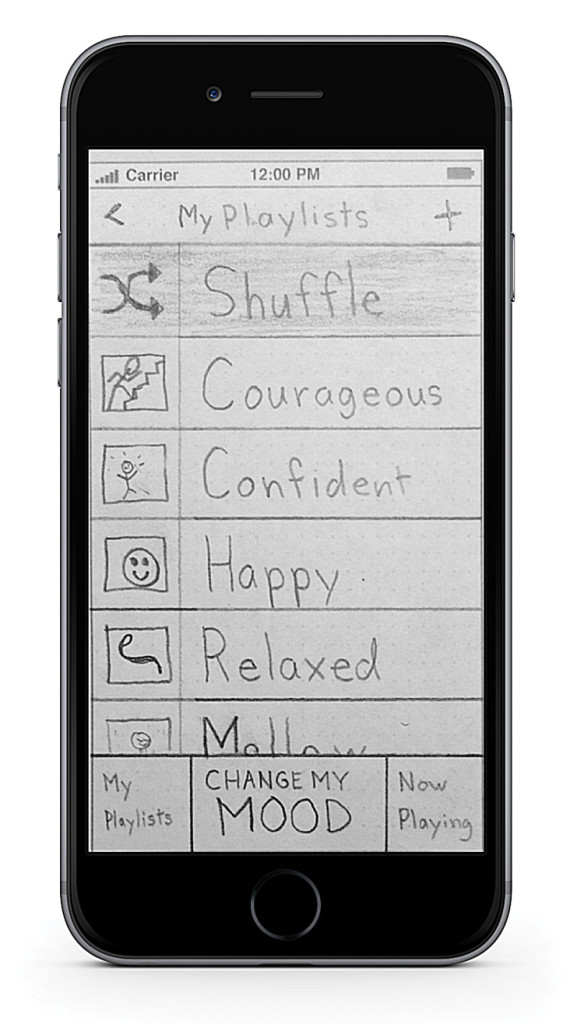My experiment: Test a faster, cheaper and better way to develop apps for patients. To date, pharma app efforts have generally been considered a disappointment, and I want to change that. With almost no budget, I plan to figure out the best mobile app idea for psoriasis patients, and I’m going to do it in less than 48 hours.
How do I get the patients in the focus group to tell me what they really need? I decide to borrow a technique from Silicon Valley called pretotyping.
Pretotyping is about getting to the right idea fast. Where prototyping tests functionality, pretotyping tests ideas. Using pretotyping tools, I can sketch concepts on paper and then turn them into “real” testable apps in minutes. The goal is to rapidly test many apps in order to find the best one for the audience.
In the focus group, each patient is handed a pencil and a sheet of white paper with an outline of a smartphone and a blank screen. We ask them to sketch out an idea for an app that could help them. They all enthusiastically get to work, and within minutes, we have a multitude of patient-centric app ideas.
“People think psoriasis is just cosmetic,” shares one patient. “I mean, it’s not like it’s cancer, so it’s hard to talk to people that don’t have it.” The thought leads him to draw a patient chat app. Other ideas include a comprehensive disease resource, day-by-day expectations and even one to use music to improve depression (see example below).
At the end of the exercise, four ideas are selected. It takes me about four hours to sketch them out. A couple of tools are available that can help me quickly create and test apps from these sketches. For this exercise, I used POP, which stands for “Prototyping on Paper.”
The four functional “paper” apps are then submitted to an online private patient forum. Patients receive links to download and test each one on their smartphone. We ask for their opinion, and how much they would pay for it. (Asking how much they would pay helps to elicit a more emotional and visceral response.)
They quickly share their thoughts—we have a winner! The interest and excitement for the “day-by-day expectations” app is unanimous. Typically, patients are told about their diagnosis, about their disease, how to take their medicine, but they rarely know what the medicine is actually doing. The insight—people want to know what is happening to their body!
For reasons beyond this article, we never produced the app. Even so, the experiment was a huge success. We proved that there is a faster, better and cheaper method to develop mobile apps.





